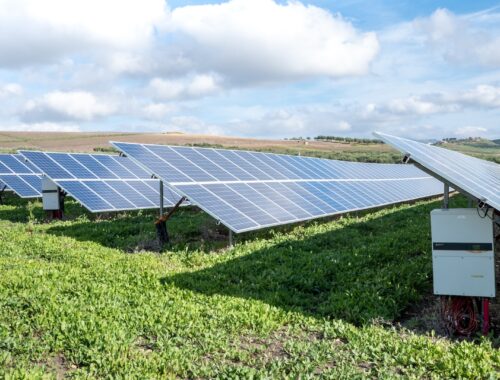
Solar Power and Electric Vehicles: Synergies for Sustainable Transportation
As the world faces the urgent challenge of transitioning to more sustainable and eco-friendly practices, the integration of solar power and electric vehicles (EVs) emerges as a powerful solution for transforming the transportation sector. Solar power provides clean and renewable energy, while electric vehicles offer a more efficient and zero-emission mode of transportation. In this article, we will explore the synergies between solar power and electric vehicles, their environmental benefits, and the potential for a sustainable future.
Solar-Powered EV Charging:
Solar power can be harnessed to charge electric vehicles, providing a clean and renewable source of energy for transportation. Solar-powered EV charging stations, also known as solar carports, consist of solar panels mounted on structures that cover parking areas. These charging stations capture sunlight and convert it into electricity, which is then used to charge electric vehicles. Solar carports not only offer shade for parked vehicles but also generate clean energy, reducing greenhouse gas emissions from both electricity generation and transportation.
Grid Independence and Energy Storage:
The combination of solar power and electric vehicles can lead to grid independence and energy storage solutions. Solar power systems can generate electricity during the day, and excess energy can be stored in batteries. This stored energy can then be used to charge EVs at night or during periods of low solar generation. By integrating solar power with energy storage and EV charging, homeowners and businesses can reduce their reliance on the electrical grid and contribute to a more resilient and sustainable energy future.
Reducing Greenhouse Gas Emissions:
Transportation is a major contributor to greenhouse gas emissions, primarily through the combustion of fossil fuels in conventional vehicles. Electric vehicles powered by solar energy offer a zero-emission alternative, as they do not produce tailpipe emissions during operation. By replacing internal combustion engine vehicles with EVs charged by solar power, we can significantly reduce greenhouse gas emissions, combat climate change, and improve air quality.
Promoting Renewable Energy Adoption:
The integration of solar power and electric vehicles promotes the adoption of renewable energy on multiple fronts. Solar carports and EV charging stations serve as visible demonstrations of renewable energy solutions, raising awareness and encouraging others to consider sustainable transportation options. Additionally, the increased demand for solar power for EV charging can drive the expansion of solar installations and accelerate the transition to renewable energy sources on a broader scale.
Off-Grid Mobility:
Solar power has the potential to provide off-grid mobility solutions, particularly in remote areas or during emergencies. Solar-powered electric vehicles, equipped with solar panels, batteries, and energy-efficient systems, can operate without the need for traditional charging infrastructure. These off-grid mobility solutions are particularly valuable for remote communities, disaster relief efforts, and specialized applications in sectors like agriculture and mining.
Renewable Energy Credits and Incentives:
The integration of solar power and electric vehicles may make individuals and businesses eligible for renewable energy credits and incentives. In some regions, installing solar panels and using renewable energy for EV charging can qualify for tax credits, rebates, or other financial incentives offered by governments and utilities. These incentives further promote the adoption of solar power and electric vehicles, making sustainable transportation more economically viable for consumers.
Smart Charging and Grid Management:
The synergy between solar power and electric vehicles can facilitate smart charging and grid management strategies. By utilizing smart charging technology, EV charging can be optimized to coincide with periods of high solar generation or low electricity demand. This helps balance electricity supply and demand on the grid, avoiding peak loads and optimizing the use of solar energy. Smart charging also empowers consumers to benefit from time-of-use tariffs, where electricity costs less during periods of low demand, incentivizing EV charging when solar power generation is abundant.
Vehicle-to-Grid (V2G) Technology:
Vehicle-to-Grid (V2G) technology enables electric vehicles to not only draw energy from the grid but also return excess energy to the grid when needed. This bi-directional flow of electricity allows EVs to serve as mobile energy storage units, contributing to grid stability and resiliency. When combined with solar power, V2G technology allows EV owners to use their vehicles as energy storage resources, absorbing excess solar energy during the day and discharging it to the grid or their homes during peak demand periods or at night.
Sustainable Urban Planning:
The integration of solar power and electric vehicles can also inform sustainable urban planning initiatives. By strategically locating solar carports and EV charging stations, cities can promote the use of EVs, encourage the adoption of solar power, and reduce the environmental impact of transportation. Sustainable urban planning that integrates renewable energy and clean transportation fosters more livable and eco-friendly communities.
The synergies between solar power and electric vehicles offer a compelling vision for sustainable transportation and energy solutions. By harnessing solar power for EV charging, we can reduce greenhouse gas emissions, promote renewable energy adoption, achieve grid independence, and pave the way for a more sustainable and resilient energy future. As technology continues to advance and adoption rates increase, the integration of solar power and electric vehicles will play an increasingly significant role in transforming the transportation sector and mitigating the impacts of climate change.
You May Also Like

Types of Solar Power Systems: Grid-tied, Off-grid, and Hybrid
May 28, 2023
Solar Power in Developing Countries: Promoting Energy Access
June 15, 2023

